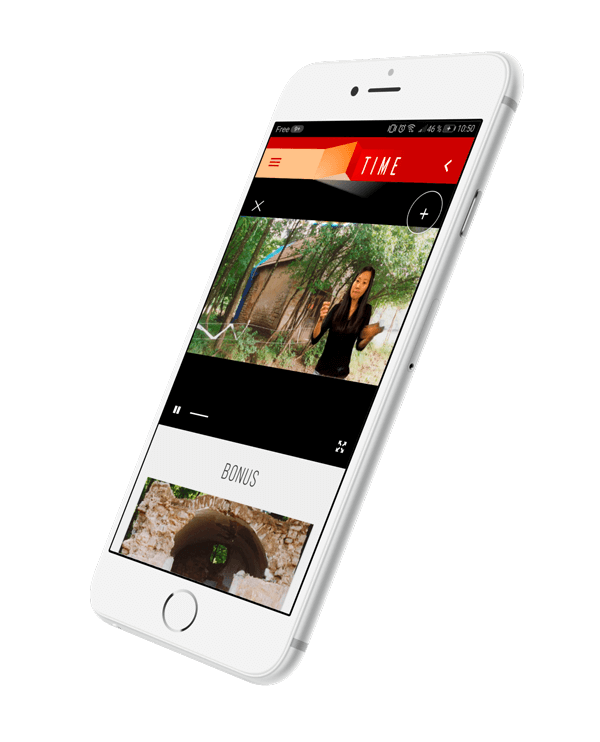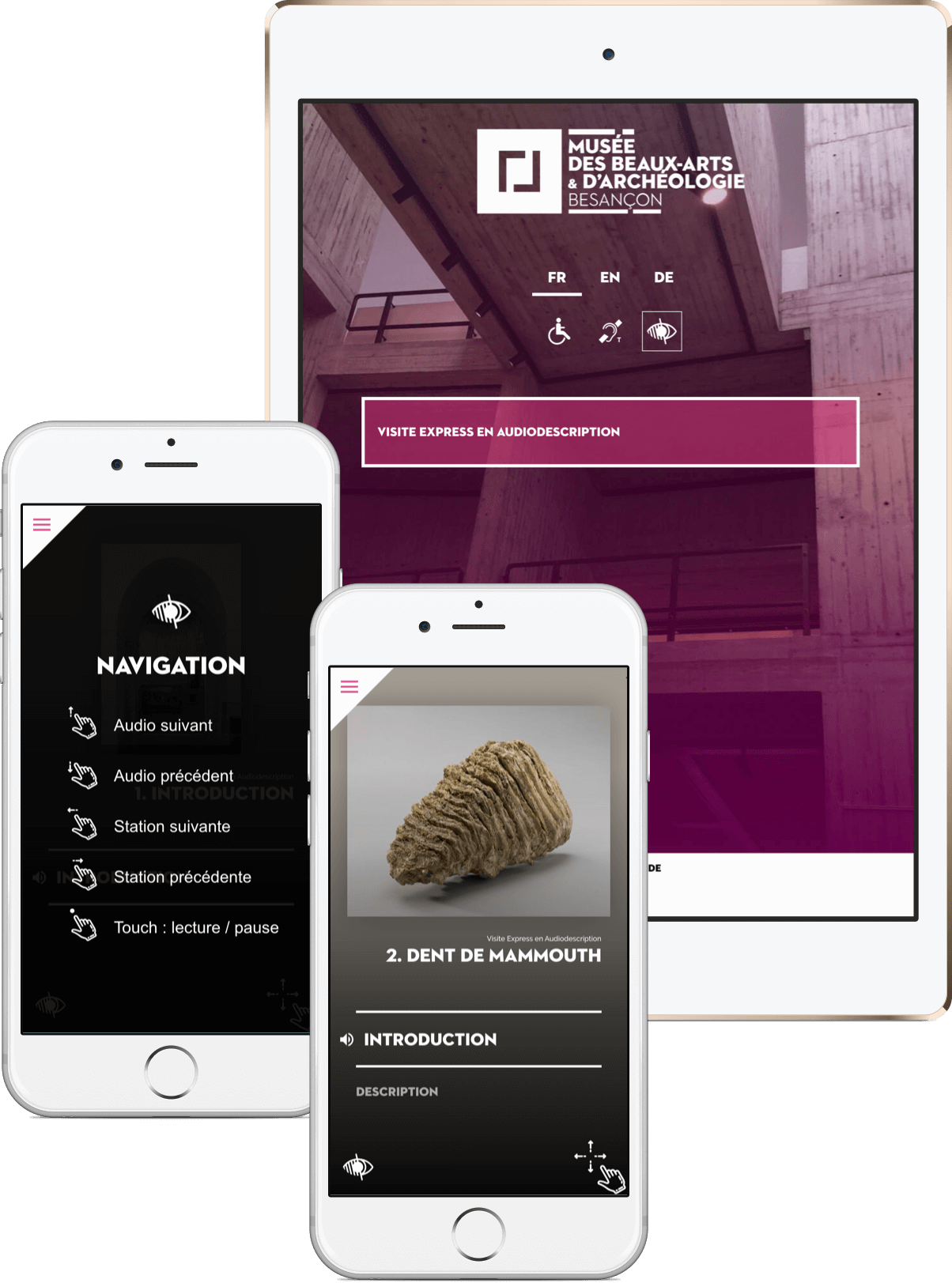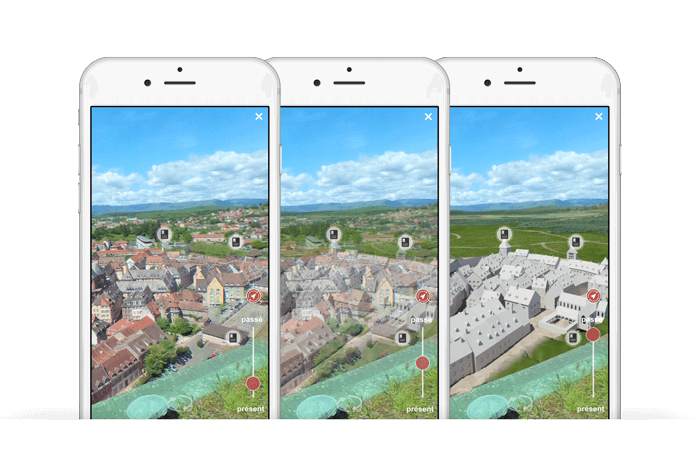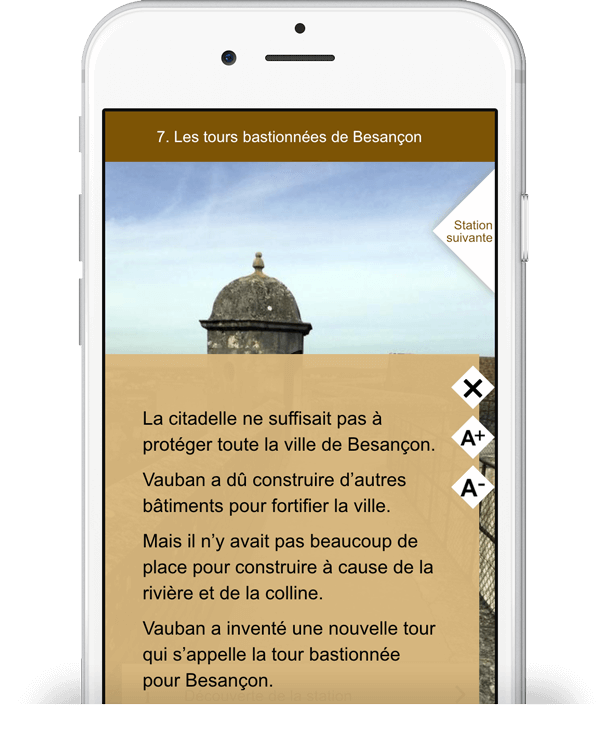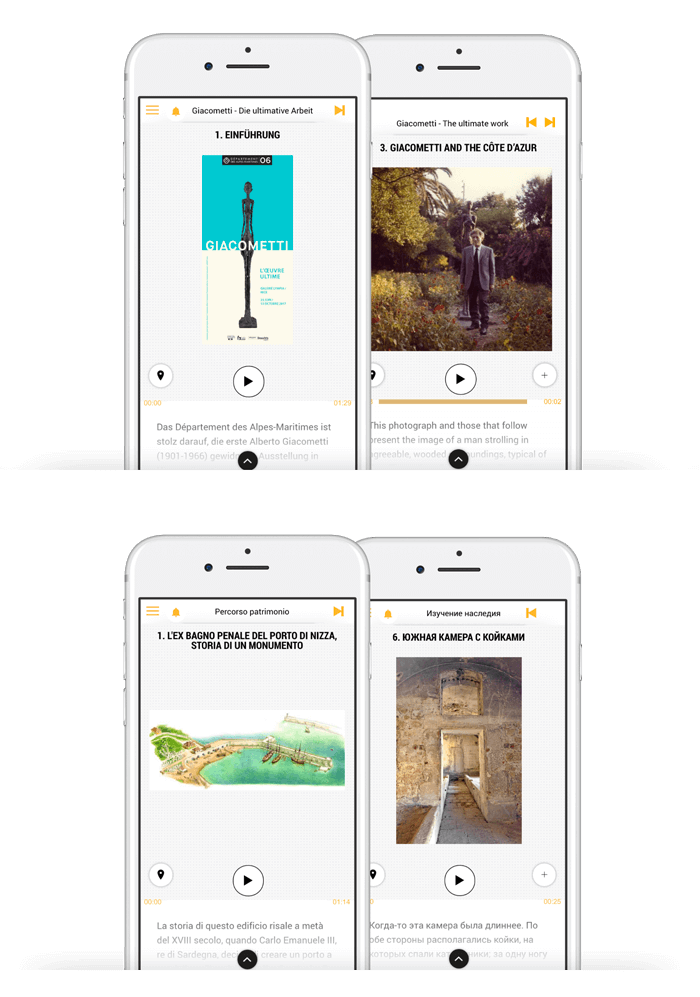Every person, regardless of their disability, according to their level of involvement, understanding or mobility, should be able to access artistic and cultural experiences.

Taking into account disabled people is not only limited to the physical aspect but also requires a review of the conditions for the transmission of information.
With GEED, you can offer the same exploration opportunities to all your visitors, regardless of their abilities.
The disability is made invisible by a personalized and adapted visit experience for everyone.

In most cases, a person with disabilities has to request whether the museum has appropriate mediation.
With GEED, it is enough to edit the application's preferences to access disability-specific mediation materials : signed language, Easy to read and understand, virtual reality, ou audio-description.
And for greater readability, the material is automatically adapted to user's capabilities : contrast, font size, etc.

Be innovative and differentiate from other institutions by offering an inclusive service for people with disabilities.
Make your institution more accessible to four disabilities types.
Navigation on the screen is done using simple gestures. The smartphone becomes a remote control to trigger audio descriptions.
Blind visitors use the visit app independently of the UI elements on the screen.
The trip between the tour stops is accompanied by an audio description of the environment.
The accompanying persons visualize in parallel visual indications of movement
The construction of audiodescription visit stations is carried out autonomously in the GEED BackOffice. The editor enters description information and loads the necessary audio files for introductions, descriptions and transitions.
Visiting stops with access limitations for the physically disabled people are rendered in VR. Additional information material is available through VR touch spots.
The construction of virtual reality scenes is done in GEED BackOffice through a AR / VR editor allowing 360 scenes import, touch spots and associated material definition.
The order of tour stops may be defined specifically for people with reduced mobility.
Turn by turn directions are are displayed between points of interest.
Specific content for easy reading and understanding is defined in the GEED BackOffice for each required language.
The visit application displays easy-to-read and understand documents with additional options to change the text size.
POIs information materials are associated with audio descriptions generated by the GEED BackOffice TTS module or from human voice recordings.
The synthetic voice uses a precise tempo and tonal intonation in order to ease the understanding by visitors with an intellectual disability.
Simplified UI and navigation based on gestures are prefered.
The user interface navigation are enhanced for fast, clear reading and use.
TTS example (DE)
TTS example (EN)
TTS example (IT)
TTS example (RU)
What is Livdeo's main mission in terms of accessibility?
Livdeo aims to make art and culture accessible to everyone by removing physical, cultural, and linguistic barriers, to ensure equal access to culture for every individual.
How do Livdeo's solutions promote accessibility for people with disabilities?
Livdeo's solutions, notably the GEED platform, incorporate specific features such as multilingual speech synthesis, audio description, sign language, and content in easy French language (FALC), making cultural visits accessible to people with disabilities.
Are the web applications developed by Livdeo compatible with screen readers?
Yes, the applications developed by Livdeo are designed to be fully compatible with screen readers such as Voiceover, enhancing accessibility for visually impaired visitors.
What measures does Livdeo take to ensure the accessibility of digital content?
Livdeo commits to following RGAA and WCAG standards, meticulously structuring data, labeling buttons, images, and all interactive elements to ensure optimal use by all users, including those using assistive tools.
How does Livdeo contribute to the enhancement of cultural heritage for remote or prevented audiences?
By offering innovative and accessible digital solutions, Livdeo enables remote or prevented audiences to discover and interact with cultural heritage, thus contributing to its valorization and dissemination to a broader audience.
Are Livdeo's solutions used in projects labeled "Tourism and Disability"?
Yes, three projects using GEED applications from Livdeo have received the "Tourism and Disability" label, demonstrating the effectiveness of these solutions in improving cultural accessibility.
What are the advantages of the FeelTheArt solution offered by Livdeo?
FeelTheArt is a pioneering solution that combines augmented reality, a user community, gamification, and AI-Art Generative creation with museum collections, offering an immersive and accessible cultural experience for everyone.
How does Livdeo ensure continuity of user experience across different platforms (mobile and web)?
Livdeo designs its applications and platforms to be intuitive and accessible on all devices, ensuring a consistent and barrier-free user experience, whether on mobile or web.
What is the environmental impact of Livdeo's solutions?
Livdeo's solutions, including the GEED boxes, are designed to be eco-friendly, with low energy consumption, thus minimizing their environmental impact while providing a high-quality user experience.
How does Livdeo integrate user feedback and needs in improving accessibility?
Livdeo places users at the heart of its development process, regularly incorporating their feedback and collaborating with accessibility experts to continuously improve its solutions and best meet the needs of all audiences.
